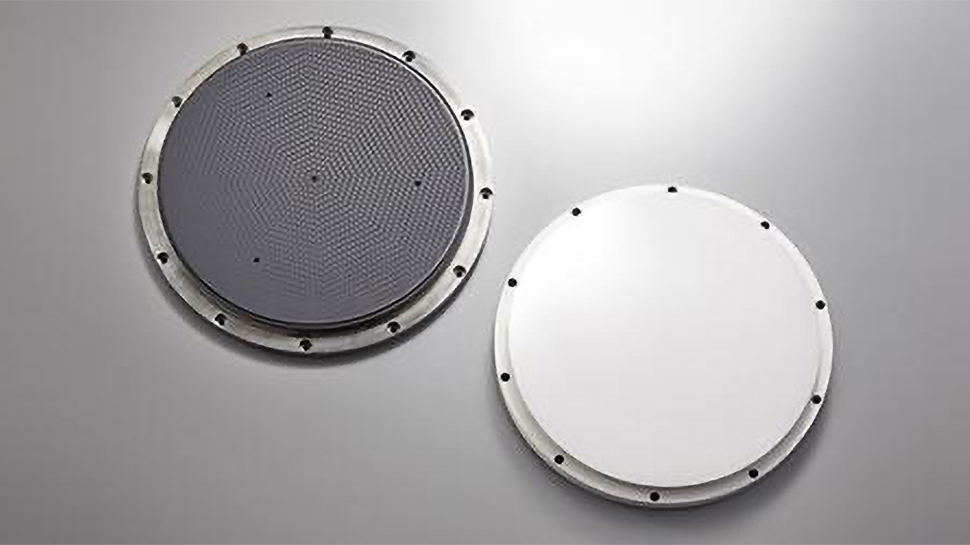
Toto is mainly known for its advanced toilets and sanitary ceramics. However, the company’s expertise in ceramic production can also be applied to semiconductor manufacturing. Since the 1980s, Toto has made electrostatic chucks (e-chucks) indispensable in modern semiconductor manufacturing. According to Nikkei, operating profits from these products are expected to exceed $100 million this year.
In contemporary semiconductor manufacturing, electrostatic chucks (ESCs) securely hold a silicon wafer (or other substrate) in place using electrostatic forces rather than mechanical clamping or vacuum-based methods. The ESC is a key component in many steps of chip production, including EUV lithography steps, plasma etching, chemical vapor deposition (CVD), physical vapor deposition (PVD), and other steps requiring precise wafer positioning and minimal contamination.
While e-chucks have traditionally been used for CVD, PVD, and plasma etching, but not for DUV lithography steps as they are carried out in an ambient environment or immersion fluid, and therefore, a vacuum system under the wafer is good enough to maintain wafer flatness and position. However, with EUV, things are different. EUV lithography operates at very short 13.5nm wavelengths and requires a high-vacuum environment to prevent absorption of EUV light. Therefore, chipmakers use e-chucks instead of vacuum chucks as they are easier to use in such environments. Also, they can provide more uniform clamping force, reduce stress, minimize distortion, and improve overlay and critical dimension (CD) control.
It takes over 4,000 steps to process a wafer and make a chip. Usage of EUV steps has been increasing in recent years, just like steps requiring precise wafer positioning, so usage of ESCs has been on the rise, driving Toto’s revenues and profits. Ceramics used for e-chucks must be both strong and resistant to cracking. Toto has developed materials with uniform properties, applying its expertise in molding and firing from its long history in toilet manufacturing. However, competition in this field is growing. In e-chucks, Toto faces Shinko Electric Industries, which has strong ties to chip equipment manufacturers and Applied Materials.
To strengthen its position, Toto has invested heavily in manufacturing. In 2020, the company spent ¥11.8 billion constructing a ceramics production facility in Oita, Japan. Between April 2020 and April 2024, it increased its ceramics production workforce by around 20%. According to company president Noriaki Kiyota, plans for a new factory are also being considered.
For fiscal 2024, Toto expects its ceramics division to generate ¥20 billion ($130 million) in operating profit, with a nearly 40% margin. This is far higher than the company’s projected overall margin of 7%. By fiscal 2026, it aims to increase that figure to ¥25 billion and expand its product range.
Toto now looks beyond wafer processing to downstream steps like cutting and packaging. According to the report, three-dimensional chip stacking requires new base substrate technologies, and ceramics are expected to play a more prominent role in these processes.
“Even if there are ups and downs, semiconductors will undoubtedly keep growing exponentially,” Noriaki Kiyota, president of Toto, told Nikkei.
#toilets #chips #Totos #electrostatic #chucks #crucial #element #modern #fabs


